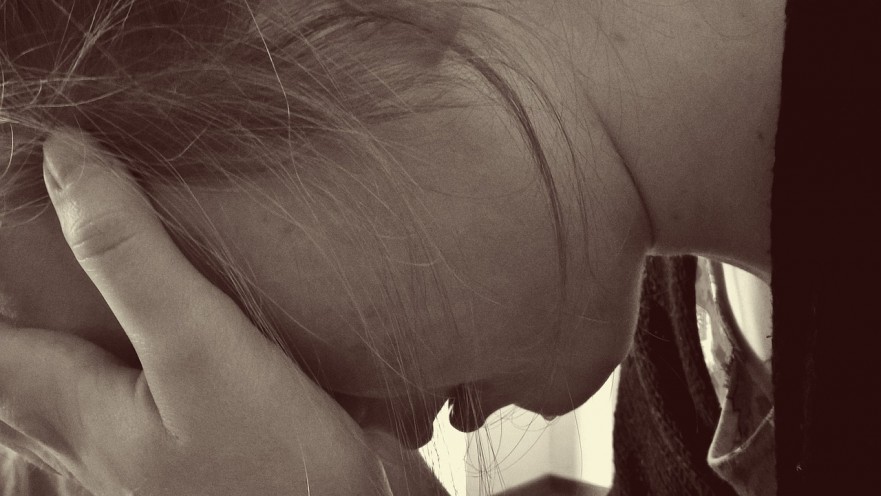It is something that is becoming all too common in schools across Arizona, the need for schools to support students and staff as they grieve for classmates, friends, and students that pass. In my first ten years of teaching, this was something I had to deal with only a couple times. In my last few years of teaching, student deaths attributed to accidents, suicide, and even homicide have become much more common. And how does a school help pick up the pieces when one of their own is no longer there? How are teachers prepared to help students when there is an empty desk that wasn’t there the day before? What role do schools now play in communicating with families and other students about student deaths?
According to the Arizona Child Fatality Review Program, teen suicide jumped 81% between 2009 and 2015, it then jumped again another 26% through 2016. Suicide is now the second leading cause of death among young people. The United Health Foundation states that in 2017, in Arizona there were 12.4 suicides for every 100,000 adolescents. This is more than the national average of 8.9 per every 100,000 teens. Arizona has more suicides in every racial subgroup and in both males and females. More than anything, there must be a focus on prevention if Arizona is going to get out of the top 25% of teen suicides.
While there are many free programs to address the issue of suicide, schools have to ask how effective are they. Many of these programs are supported by donations and grants and can come and go as money flows in and out. Many times these programs rely on schools to provide them time and space, and although there is support if they happen to be there at the right time, the reality is, when a kid is in crisis, one cannot depend on an outside program to be there.
The reality is, schools need more counselors and social workers working full time within them. Although partnerships with outside agencies are imperative, nothing replaces a trusted face that is there consistently when a crisis arises. Here is where Arizona is failing, we have the highest ratio of students to counselors in the country. AZ Central released the numbers last year and there is a 744 to one ratio for counselors in Arizona. Thinking about my district, we are at the national average for our middle and high school students but have no counselors on staff at our K-6 schools. When we are looking at prevention models, we have to begin thinking of all of our students not just those in high school. Arizona can not pit hiring more counselors against hiring teachers, if the legislature is committed to the mental health of young people, they will fund counseling outside of the 20×2020 funding formula.
While prevention is the most important piece of the puzzle, the reality is schools must learn how to deal with grief. Protocols should be in place for the reporting of information to both students, staff, and families. Strong relationships with grief counselors and hospice must be formed to provide trauma services for those affected. Teachers are truly first responders in these cases and for the most part, reflecting back on my teacher preparation, are unprepared for what to do for kids who are grieving, many times while the teacher is grieving as well. The National Crisis Center out of the University of Southern California has materials for school personnel to use to prepare for these incidents.
Schools have an enormous responsibility for the welfare of our young people. The reality is there are students with more ACEs (adverse childhood experiences) in our schools than ever before. We as educators need to look within ourselves and ask how we can improve our practices to ensure that every student that comes to school has the opportunity to have healthy, trustful relationships with staff. We have to create a culture of care within all of our schools. And we must let all stakeholders, including legislators, know that funding for mental health services in schools is needed to ensure that no more of Arizona’s children fall victim to death by suicide and all young people have access to mental health support at school.










Comments 4
Thank you for sharing this post. It is a tough subject. Unfortunately, it is something we must be prepared for.
I am so lucky to work with an incredible social worker and team of counselors at my school. As you pointed out, Arizona as a whole is in need of more of these professionals ready to assist teachers, students, and admin in numerous scenarios.
Thank you for writing this Jamie. Such a prominent issue that we often do not speak to. Funding is at the core of the issue. Counselors are needed at all levels and at the appropriate ratios to provide the support needed (for students and teachers).
Very sad statistics. I hope that with some of the changes happening in our state that we see the value of these services in order to support our students, families and educators.
Wow. These statistics reveal the sad realities facing our schools, teachers, and students. I work at a school with one social worker for over 2150 students. She is phenomenal, but way overworked. She positively impacts our students and supports our teachers. But one person for 2150 students isn’t enough. We must fund these crucial positions. Clearly, the numbers show this need.